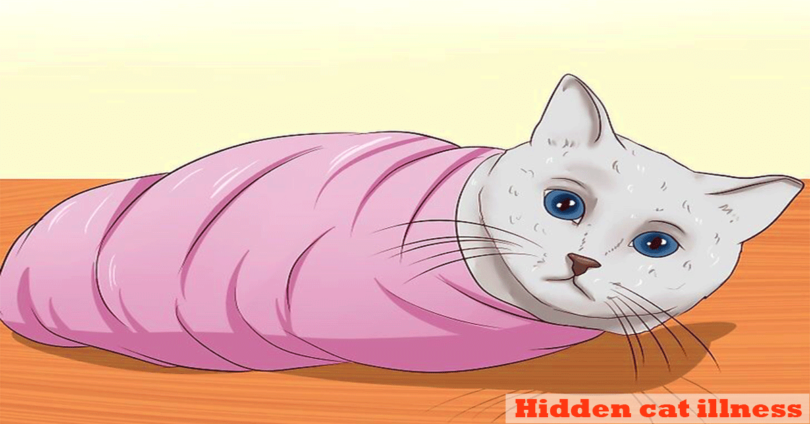Cats area unit masters at activity health problem, and since changes in their traditional behavior area unit sometimes the primary signs of illness, cat homeowners ought to recognize what to seem for and once to contact our workplace for an entire examination and analysis. Here area unit ten signs your cat might have associate degree illness:
1. Inappropriate Elimination Behavior
Litter box care and information concerning traditional elimination behavior area unit vital for hindrance and treatment of medical and activity issues. Inappropriate micturition associate degreed shitting typically accompany an underlying medical condition and don’t occur “for spite.”
A cat that’s urinating unsuitably might have any variety of conditions related to the behavior, as well as lower tract illness, renal disorder, tract infection, and DM. It may be a proof of inflammatory disease, that makes it troublesome for the cat to induce into the litter box.
Blockage of the tract signals a veterinary emergency. A blockage is treatable, however, temporal order is vital. Once known, the cat should receive veterinary care as before long as potential. Otherwise, fatal complications may develop. Signs to seem for embrace straining within the litter box with very little or no results, crying once urinating, and frequently makes an attempt to urinate.
2. Changes in Interaction
Cats area unit social animals and luxuriate in interactions with their human family and infrequently with alternative pets. Changes in those interactions might signal issues like illness, fear, and anxiety. it’s going to conjointly signal pain, which might cause aggression.
3. Changes in Activity
A decrease or increase in activity will be proof of a variety of conditions. As cats age, there’s associate degree multiplied the risk of inflammatory disease. Discomfort from joint illness or general diseases may cause a decrease in inactivity. It’s vital to grasp cats sometimes don’t bog down simply because they’re previous. multiplied activity is usually seen with adenosis. Any changes in routine activity warrant a visit to the physician.
4. Changes in Sleeping Habits
The key to differentiating abnormal lethargy from traditional off guard is knowing your cat’s sleeping patterns. the typical adult cat might pay sixteen to eighteen hours per day sleeping. this can be traditional, however, a lot of of that sleeping is “catnapping.” The cat ought to respond quickly to usual stimuli, like the owner walking into the area or petfood being ready. If your cat is sleeping over usual or has discomfort giving birth down and obtaining up, this might be a proof of underlying illness.
5. Changes in Food and Water Consumption
Look for changes, like a decrease or a rise in consumption and the way the cat chews its food. attenuated food intake will be a signal of a variety of disorders, starting from poor dental health to cancer or nephropathy. hyperbolic food consumption will be caused by DM, adenosis, or alternative health issues. Changes in water consumption could also be harder to look at, particularly in cats that pay time outdoors or drink from bathrooms and sinks. hyperbolic water intake will be an associate early indicator of thyroid issues, nephropathy, diabetes, or alternative issues.
6. Unexplained Weight Loss or Gain
A modification in weight doesn’t essentially correlate with a modification in appetency. Cats with adenosis or DM will reduce despite sensible appetites. several alternative diseases cause each appetency and weight loss. If your cat goes to the food dish then backs far from it while not uptake, nausea could also be the supply. On the opposite hand, blubber has become a heavy health concern in cats, with the hyperbolic risk of DM, joint sickness, and alternative issues. Take the cat to the doctor if there square measure unexplained changes in weight.
7. Changes in Grooming
Typically, cats square measure fastidious groomers. Note whether or not your cat’s coat is clean and free from mats. Patches of hair loss or a greasy or matted look will signal associate underlying sickness. Also, bear in mind of your cat has problem grooming. A decrease in grooming behavior will indicate a variety of conditions, as well as worry, anxiety, blubber or alternative sicknesses. a rise in grooming could also be a signal of a skin disorder.
8. Signs of Stress
Yes, your cat will be stressed despite having associate “easy” life. ennui and sharp changes square measure common causes of stress in cats. Stressed cats might demonstrate attenuated grooming and social interaction, pay longer awake and scanning their surroundings, hide more, withdraw and exhibit signs of depression, associated have a hyperbolic or attenuated appetency. These same signs might indicate a medical condition. sadly, also, stress will precipitate several diseases in cats. it’s vital to rule out medical issues initial then address the causes of environmental stress.
9. Changes in Vocalization
Increased vocalization or howling is a lot of common in older cats and is usually seen with some underlying condition. several cats even have hyperbolic vocalization if they’re in pain or anxious. If you note a modification in vocalization, schedule a meeting together with your doctor to rule out medical issues and to get suggestions for minimizing or eliminating the behavior.
10. Bad Breath
Studies show seventy p.c of cats have gum sickness as early as age 3. Since dental sickness is taken into account a silent sickness, it’s vital to own your cat’s teeth checked every six months to assist forestall dental sickness or to begin treatment early. one in all the first indicators of associate oral downside is unhealthy breath. Regular aid will forestall unhealthy breath, pain, tooth loss and unfold of infection to alternative organs.


Leave a Comment